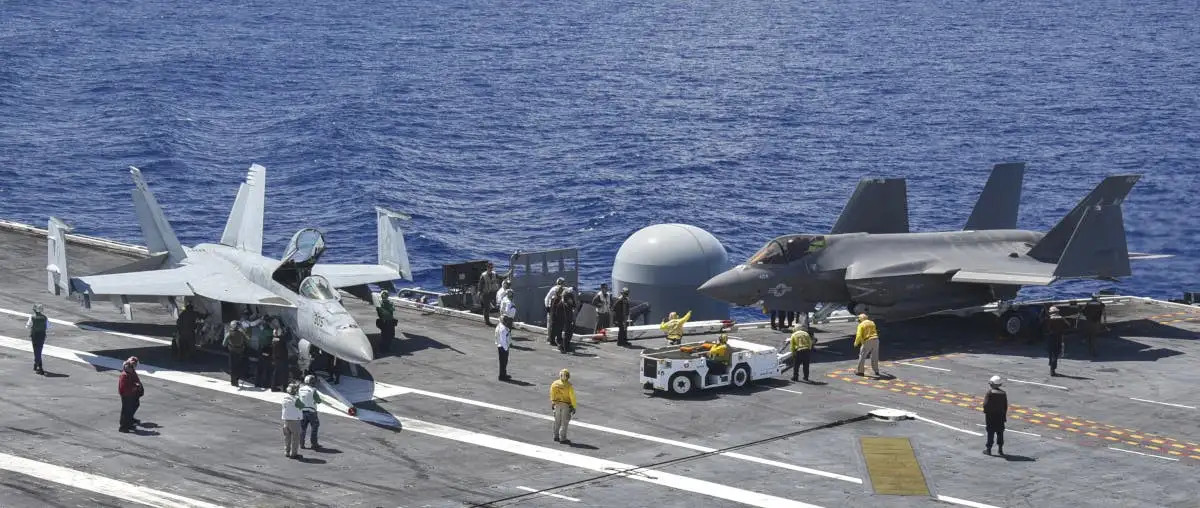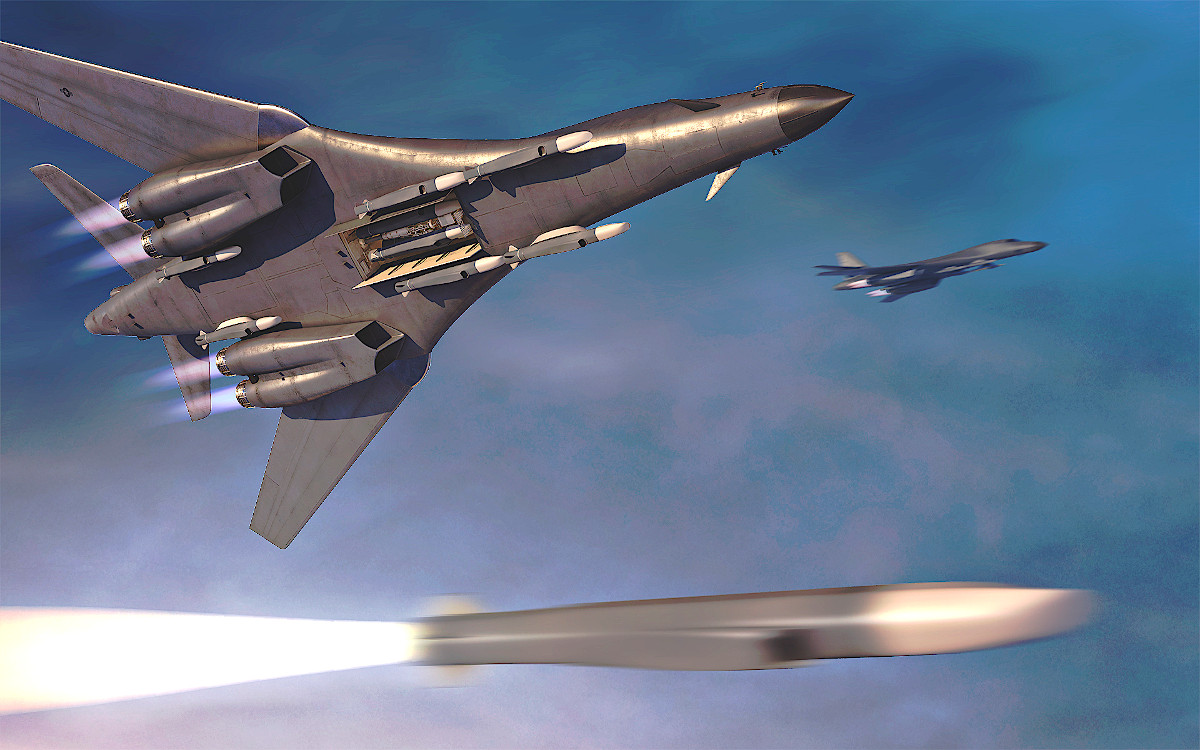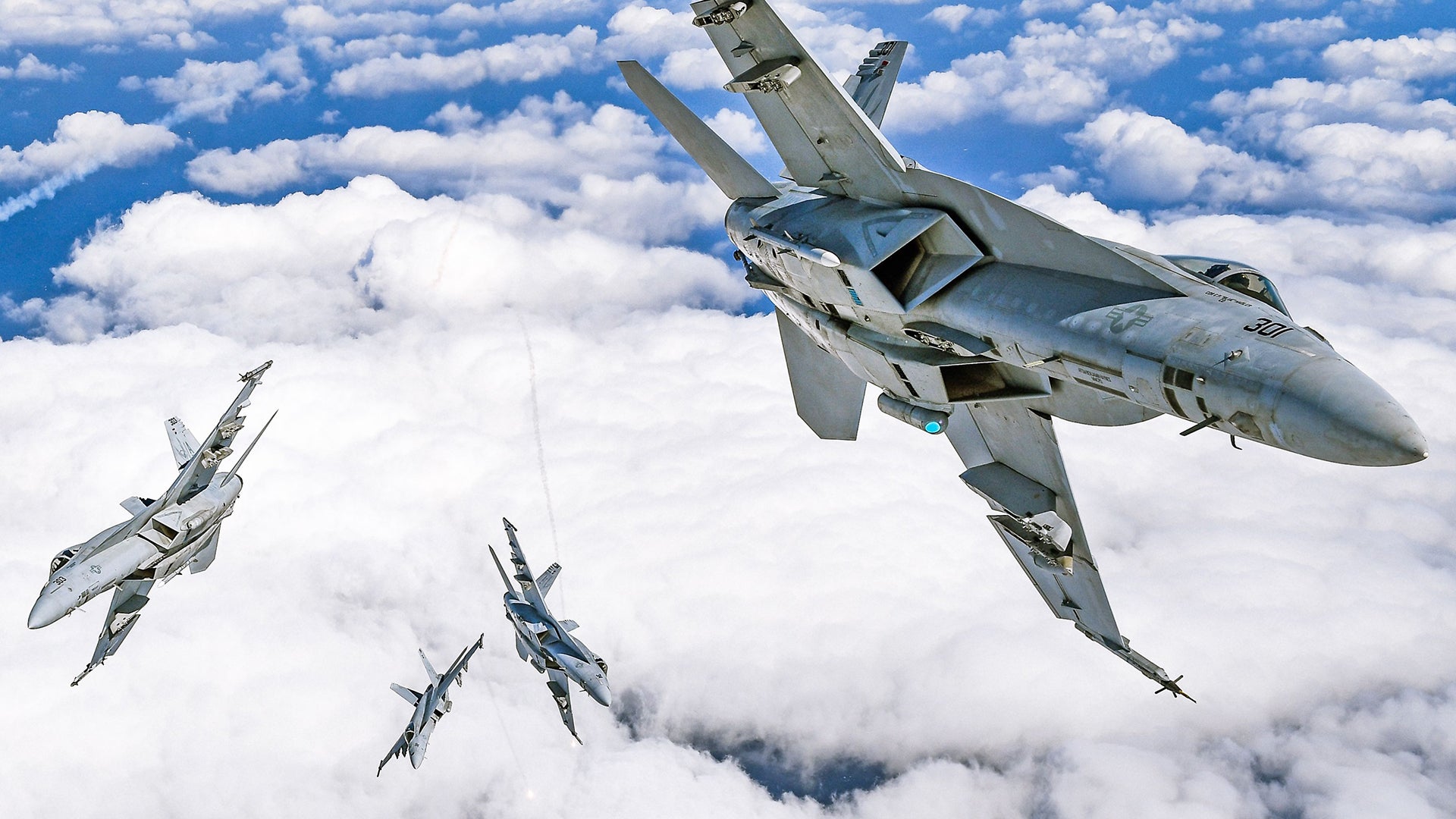Boeing has received a contract to help develop a ramjet-powered high-speed missile demonstrator for the U.S. Navy. The company says that the design will aid the service in identifying requirements for future air-launched missiles, possibly ones able to reach hypersonic speeds, that its F/A-18E/F Super Hornets and other combat aircraft within its carrier air wings will be able to employ against targets on land or at sea.
The company’s Defense, Space & Security division announced that the Naval Air Warfare Center Weapons Division (NAWCWD), part of Naval Air Systems Command (NAVAIR), had awarded it this contract, worth approximately $30 million, on Oct. 20, 2020. The work will be conducted under what is officially called the Supersonic Propulsion Enabled Advanced Ramjet (SPEAR) program. The goal is to conduct the first flight of the demonstrator in late 2022.
“We have a talented team of engineers to meet the challenging technical demands and schedule timeline that the SPEAR program requires,” Steve Mercer, the Program Manager at Boeing for the SPEAR effort, said in a statement. “We look forward to working with Navy experts to advance technologies for the Navy’s future capabilities.”
It’s not entirely clear what kind of missile demonstrator the Navy is looking for exactly for the SPEAR program. The acronym includes the word “supersonic,” but Boeing’s press release cites its prior work on the X-51A Waverider, an experimental air-breathing hypersonic vehicle that featured a scramjet engine. Hypersonic speed is generally defined as anything above Mach 5.

At the same time, Boeing also highlighted its work on “the Variable Flow Ducted Rocket propulsion system under the Triple Target Terminator program in 2014.” The Triple Target Terminator program, or T-3, which the Defense Advanced Research Projects Agency (DARPA) led, explored concepts for very-long-range air-launched missiles that would be able to engage hostile aircraft, cruise missiles, and air defense threats on the ground, hence the name.
A Variable Flow Ducted Rocket propulsion system is a kind of rocket ramjet, a relatively well-established concept at its core, in which gas produced by burning a source of solid fuel is mixed with compressed air fed into a combustion chamber via a duct or air intake to produce thrust. Advanced designs that allow for varying the flow of gas into the combustion chamber make it possible to throttle the thrust and adjust the speed of the vehicle the ramjet is powering. With this in mind, it’s worth noting that NAWCWD issued a request for information regarding “Solid Fuel Ramjet Propulsion Manufacture/Test” in March, though it is unclear if that contracting notice is related in any way to SPEAR.
In addition, Boeing’s press release says that it will “co-develop” the SPEAR demonstrator, but it’s unclear if this means another company is involved in the effort or that the Navy’s own engineers and scientists will be directly assisting with the work. The website of the Naval Aviation Systems Consortium (NASC) lists a contract award to the company relating to the SPEAR program on Aug. 31, valued at just over $32 million, but for the demonstrator’s airframe only. NASC “has been formed to support the technology needs of the Naval Air Warfare Centers (NAWCs) and the Naval Air Systems Command (NAVAIR) through the use of Other Transaction (OT) Authority,” according to the site.
There is no mention of this award in the Pentagon’s daily contracting announcement for Aug. 31, which is supposed to include any deal valued at more than $7 million. The SPEAR contract that Boeing has just announced also does not appear in today’s notice, so it’s unclear when the Navy formally awarded these two contracts and whether or not they are, in fact, the same one. The War Zone has already reached out to Boeing for more information about its involvement in the SPEAR effort.
Whatever the company’s role in the project is or isn’t, the press release certainly indicates that it will be a stepping stone to the development of future anti-ship and land-attack missiles that will be integrated onto aircraft in the Navy’s carrier air wings. This includes the services F/A-18E/F Super Hornets, another Boeing product, a significant number of which eventually slated to go through the Block III upgrade program, which will add a host of advanced features that you can read about in more detail in this past War Zone piece. At the same time, the clear indication is that any operational weapons that follow-on from the SPEAR effort could be added to the arsenal of the service’s F-35C Joint Strike Fighters, as well.

“The contract award comes after the Department of Defense requested information from the defense industry to help the Navy determine technical requirements of future carrier-based land and sea strike weapons systems,” Boeing’s press release said.
“The SPEAR flight demonstrator will provide the F/A-18 Super Hornet and carrier strike group with significant improvements in range and survivability against advanced threat defensive systems,” Mercer, the firm’s SPEAR program manager, added.
Very-long-range, high-speed strike weapons could be very valuable for the Navy’s carrier air wings, especially as potential near-peer adversaries, such as China and Russia, continue to develop and field increasingly longer-range and otherwise more capable surface-to-air missile systems and associated radars and other sensors. Aircraft carriers and their associated strike groups and air wings are also increasingly at risk from various anti-access and area-denial capabilities, further underscoring the need for weapons with greater range and that are able to prosecute targets faster to help ensure their survival.
At present, the primary air-launched stand-off anti-ship and land-attack missiles available to them are the AGM-84D Harpoon anti-ship cruise missile, the AGM-84H/K Standoff Land Attack Missile-Expanded Response (SLAM-ER), and the AGM-158C Long Range Anti-Ship Missile (LRASM), all of which are subsonic.

The service is in the process of developing the AGM-88G Advanced Anti-Radiation Guided Missile-Extended Range (AARGM-ER), which will have at some surface strike capabilities and will also serve as the basis for a Stand-in Attack Weapon (SiAW) for the U.S. Air Force. However, the exact speed and range of this weapon are unclear. The Navy is also developing a powered cruise missile derivative of its AGM-154 Joint Stand-Off Weapon (JSOW) glide bomb.
Boeing’s SPEAR announcement comes as the U.S. military as a whole is pursuing a wide array of new hypersonic strike weapons, including unpowered boost-glide vehicles and air-breathing missiles. The Air Force is working toward its own “Expendable Hypersonic Multi-Mission Air-Breathing Demonstrator” as part of a program called Mayhem, which is linked to work on advanced turbine-based combined cycle engines.
That service is also working closely with DARPA on the Hypersonic Air-breathing Weapon Concept (HAWC) project and its own Hypersonic Attack Cruise Missile (HACM) effort. Lockheed Martin, which is leading the development of the HAWC missile, has proposed a follow-on design for use by the Navy in the past.
In August, the Air Force had said it was looking at designs from Boeing, as well as Lockheed Martin and Raytheon, to meet a requirement for “a solid-rocket boosted, air-breathing, hypersonic conventional cruise missile, air-launched from existing fighter/bomber aircraft.” It’s not clear if that announcement was related to HACM or not, but the following month, Boeing released a computer-generated promotional video featuring a B-1 bomber firing what the company described as a notional hypersonic missile. The company has subsequently released a more detailed still rendering featuring this conceptual missile that, at least visually, appears to be an air-breathing design.

All told, it’s hardly surprising that the Navy is also in the process of pursuing its own high-speed strike missiles to arm its carrier aircraft. There’s no reason to believe that the weapons that emerge from SPEAR won’t be suitable for integration onto land-based platforms, such as the service’s P-8A Poseidon maritime patrol aircraft, as well.
Whatever SPEAR’s final design looks like, it’s an important step forward for the Navy in providing this capability to its combat aircraft fleets in the future.
Contact the author: joe@thedrive.com
